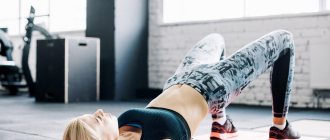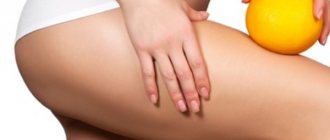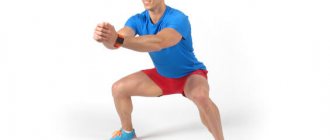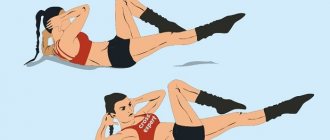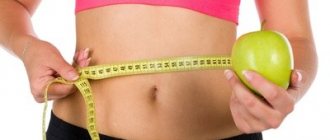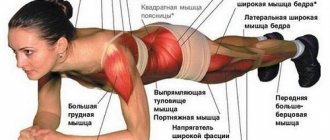Squats are a great way to lose weight. Regular exercises, which take a few minutes a day, in the long term can get rid of extra pounds and tone your muscles and keep your body in order. A simple technique accessible to everyone that really works.
Losing weight is possible only in two cases: as a result of long and grueling diets or intense physical activity. There is no point in considering the first option. It is ineffective, causes great discomfort and provokes the occurrence of various pathologies. The second, in turn, not only helps to achieve your goal, but also has a positive effect on health.
Do squats help you lose weight in your legs and thighs?
Squats are a must for losing weight in your legs. They not only strengthen muscles, but also have other positive effects:
- improve blood circulation in the thighs and buttocks, which speeds up metabolic processes and helps burn fat;
- allow you to get rid of cellulite by normalizing metabolism;
- restore skin tone, and legs remain toned after losing weight.
Will your legs lose weight if you squat? And is it possible to pump up big muscles for a girl? There is no need to be afraid to exercise, even if the goal is to lose weight and not build muscle mass.
Warning! If you lose weight only through diets, there is a chance that the skin will stretch and stretch marks will become noticeable.
It is impossible to pump up your legs to the level of bodybuilders at home, but restoring them to health and making them slim is quite possible.
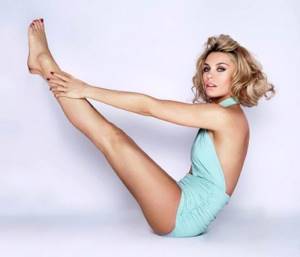
What is the effect of squats?
Perhaps you have already resorted to various gymnastic exercises or grueling diets to reduce your weight and were left disappointed, since fat deposits in problem areas, namely on the buttocks, thighs, and legs, have not disappeared. Don't be upset! A set of exercises with squats will help you, because both strength and aerobic loads are involved: the leg muscles tense, the heartbeat quickens, the blood is saturated with oxygen, metabolic processes are accelerated, and fats are burned.
The mechanism of weight loss is that as a result of the applied loads, adipose tissue gives way to muscle mass, which in turn prevents the secondary accumulation of fat in this place. You probably already want to part with excess volume in the leg area, don’t you?
Varieties of exercise
Beginners should start with simple exercises using only their own weight (no dumbbells, barbells or other weights) and work on the technique. Then you can try different types of squats and increase the intensity of the load.
Simple
Classic squats are included in any fitness program for general weight loss. The goal of this exercise is to lower yourself down and up while standing on both feet and using only your own weight. This variety is suitable for beginners and can be performed at home.
With dumbbells
Dumbbells are the first weight used during squats. They come in different sizes and weights, it is better to start with the minimum and gradually increase it. They increase the load on the leg muscles when lifting, so they are worked more intensely. Compared to a barbell, dumbbells place less stress on the spinal column.
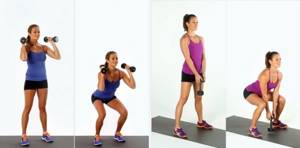
With a barbell
It is better to perform squats with a barbell in the gym with a trainer. An empty bar weighs from 5 to 15 kg, depending on the type of barbell and its purpose. Pancakes are placed on it on both sides, which also differ in weight.
Basic pancakes weigh from 5 to 25 kg, additional ones - from 250 g.
Attention! It is better to practice the technique with an empty bar and then put additional weight on it, since improper distribution of the load can harm the spine and knee joints.
Near the wall
The squat option works the leg muscles no worse than the classic method. The wall acts as a support for the spine and relieves stress on it. The only negative is that during this exercise, coordination of movements develops to a lesser extent. To work on this nuance, you can place a fitball between the wall and your back and squat with it.

Guys! We launched an author community on the topic of health, fitness and longevity. Let's build an ecosystem together that will make us develop, no matter what! Join if you care about your health!
On one leg
Single leg squats are also called pistol squats. This is a powerful exercise that mainly works the muscles of the buttocks and the front of the thigh. Its complexity is comparable to squats on both feet with a barbell proportional to the weight of the athlete. It is worth paying attention to for two main reasons:
- intense work of the leg muscles without the need to use additional equipment;
- reduced load on the spine compared to weighted squats.
By squatting on one leg, you can get your entire body in shape, not just your lower part. The exercise forces you to maintain balance using the muscles of your legs, back and abdominals.
Advice! If squats on one leg are difficult, lean on the wall at first, and later, when the muscles become stronger, try doing them without support.
Bulgarian
Bulgarian squats, or lunges, are a variation where one leg is thrown back onto a high bench and the foot rests on it. During their execution, the muscles of one leg are worked in isolation, then their position changes.
There are several variations of Bulgarian lunges:
- without weighting (with its own weight);
- with dumbbells or barbell;
- with a fitball instead of a classic bench.
The exercise, although it seems simple and can be performed at home, belongs to the group of complex ones. You can start it when you have already mastered the technique of simple squats.
Watch the video on how to do Bulgarian squats.
Plie
Plie squats are aimed at working the muscles of the inner thigh. The difference from the usual version is in the position of the feet - they are directed with the heels inward and the toes outward. In this way, not only the force load on the muscles occurs, but also their stretching.
You can squat with a wider or narrower stance; different techniques will work different muscles. The deeper the squat, the greater the likelihood of tightening not only your legs, but also your buttocks.
With a bounce
Jump squats are performed without additional weights, so they are accessible to everyone. Their peculiarity is that the jump perfectly coordinates the body and affects not only the legs and buttocks, but the whole body. This variety is contraindicated for acute and chronic diseases of the knee joints, as well as for knee injuries.
Squats are a universal leg exercise that helps work the outer, back, front, inner thighs, calves and buttocks.
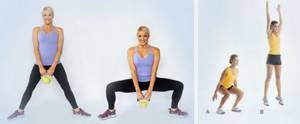
Swings for a slim butt and thighs
Leg swings work the buttocks and thighs from all sides, tighten the muscles, and make the lower part strong and elastic. Swings are performed from a standing, sitting, lying position. When performing swings in different directions, all the muscles of the thigh and buttocks work.
For independent work, it is also worth studying video exercises for losing weight on legs and thighs. For example, swings supported on the elbows and knees are suitable for working the buttocks. The leg rises bent and straightens at the top with tension. A rounded butt is made by swinging to the side, that is, moving the leg away from you. Abduction is convenient to do from a standing position, on all fours or on your side.
To work your hips, use swings from a standing or knee-elbow position, and in the second case the amplitude of movement easily increases. If the swing is made with a straight leg, the load goes on the thighs; if it is bent, the butt works more.

Adduction swings are also important, that is, the direction of movement of the leg goes towards the midline of the body or even beyond it. The adductor muscles of the inner thigh work here. As a result of training, the most problematic area - the inner surface of the leg - is leveled and tightened.
How to squat correctly to lose weight in your legs
Accurate technique for performing exercises is the key not only to better results, but also to healthy joints. First, you need to learn how to distribute the weight specifically to the muscles so that the load on the knees and back is minimal.
There is an algorithm that is used during squats both with your own weight and with weights:
- Starting position: feet hip-width apart, toes pointing forward. Dumbbells are held in straight arms extended along the body. You should try to place the barbell not on your shoulders, but lower, on the deltoid muscles.
- When lowering down, the back remains straight, the gaze is directed upward, and the knees are forward. The pelvis is moved back a little, as if the athlete is sitting on an invisible chair. You can squat until your thigh is parallel to the floor. The heels do not come off the floor.
- When standing up, the knees are the first to straighten. The main thing is to stand up smoothly, and you should feel tension in the muscles of the thighs and buttocks.
Important! Many beginners begin to stand up with a sharp lift of the pelvis. This is an incorrect technique that can harm your knee joints.
Different variations of this exercise have their own technique. So, during plie squats, it is allowed to lift off the heels at the bottom point, but you need to get up and go down on your full foot. When jumping, it is important to land smoothly, with your toes touching the ground first.
The main condition is that you should not feel pain during training in the gym or at home. The norm is a feeling of strong tension and burning in working muscles. But painful sensations are a sign of improper technique, the presence of injuries or chronic diseases of the musculoskeletal system.
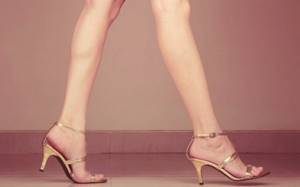
Types of squats and their correct execution for effective training
There are several popular options for performing squats for weight loss:
- Classic - feet shoulder-width apart, knees slightly bent. The back must be kept straight and without bending, so as not to cause injury to the spine. The abdomen is tense, the knees are under control, and do not protrude beyond the toes.
- As you exhale, you should lower yourself down, pushing your pelvis back. Be sure to put pressure on your heels when rising to avoid falling, so that all tension goes to the buttocks. It is important to monitor your breathing and back. Lower yourself, wait 2-3 seconds, exhale, then rise.
- “Plie” - spread your legs wide, take your knees in different directions. Keep your back straight and your stomach tense. It is very important to control the movements of the pelvis; it should not move forward. As you exhale, lower yourself. Control your knees and pelvis position. There is no need to sit low. Lower yourself, wait 2-3 seconds, inhale, then rise.
- Squatting for weight loss with a barbell is a power version, go to the bar, stand under it. Place the bar on your trapezius and move your elbows back. Direct your gaze forward, maybe a little upward. Don't throw your head back or turn. Feet slightly wider than shoulder width. Straighten your back, bend your lower back. As you inhale, lower yourself down as low as possible. Your back is straight, don't slouch. Exhale, then rise, but not all the way, so that the buttocks are always tense.

Monthly training table
We offer a training regimen with squats, designed for 28-30 days.
| weeks | Types and number of squats | Additional leg exercises |
| 1 | Regular without weights 3×15 Plie 3×15 | Swings to the sides, back and forth 4×15 Lying pelvic lift 3×20 |
| 2 | With dumbbells or barbell 4×15 With jumping 4×20 | “Bicycle” 3 sets of 5 minutes Swings on all fours 4×15 |
| 3 | Bulgarian 3×12 With dumbbells 4×15 With bounce 4x20 | Stepping onto a high support 3×15 Fast running in place with shin overlapping 3 sets of 3 minutes |
| 4 | Against the wall with a fitball 3x10 With an Olympic bar 4x15 | Lunges forward and to the sides 4×12 Jumping rope 25 minutes |
Knee problems and squats
The knee joint is a kind of hinge. When moving, its internal structures (femur and tibia bones, kneecap, ligaments and tendons) slide relative to each other. Such exercises are safe as long as the articular cartilage is healthy and provides shock absorption.

If inflammatory (arthritis) or degenerative (arthrosis) changes occur in it, it does not perform its function, the surfaces of the bones are erased, and the periarticular tissues become inflamed.
Doctors' recommendation! With arthrosis, squats are contraindicated. However, the stress on the knees is reduced if you squat in water.
The best way to keep joints healthy is prevention. There are several tips on how to squat so that the sport does not harm your knees:
- do not increase weight until the body adapts to the load;
- follow the technique (it is best to squat under the guidance of a trainer);
- Before training, be sure to warm up;
- stretch no more than is necessary to warm up the muscles (excessive amplitude in the joint increases the risk of injuries and chronic diseases).
The main rule is not to endure pain during training. Crunching and painful sensations that occur during or after exercise may be the first sign of serious problems. The trainer must be notified of any changes in health status. He will select an individual program, taking into account all the features and recommendations of the doctor.
Who are contraindicated for squats?
Squats are not recommended if you have joint injuries, spine, heart or vascular disease. Such exercises are contraindicated for the following ailments:
- Scoliosis;
- Hernia;
- Radiculitis;
- Phlebeurysm;
- Hypertension.
And in general, if you have never done anything before and suddenly decide to make drastic changes in your life, it is best to consult a doctor before starting training. He or she may suggest other forms of exercise, such as running or cycling. You can read about whether cycling helps you lose weight and what is the right way to run for weight loss in other articles on our blog.

Squats aren't for everyone. But you can almost always choose another type of fitness.



